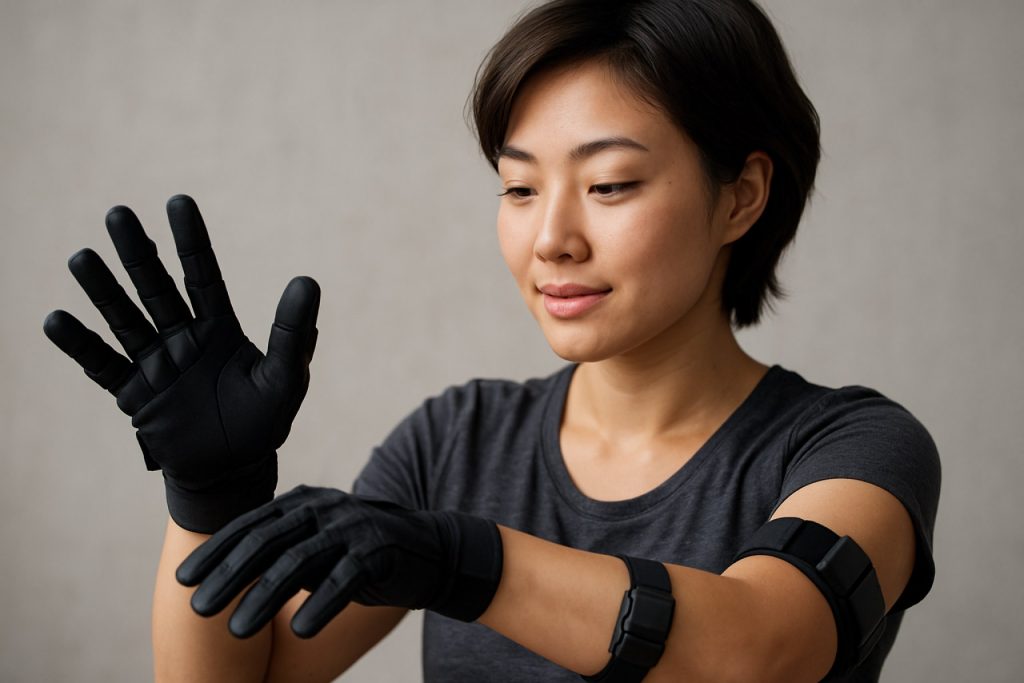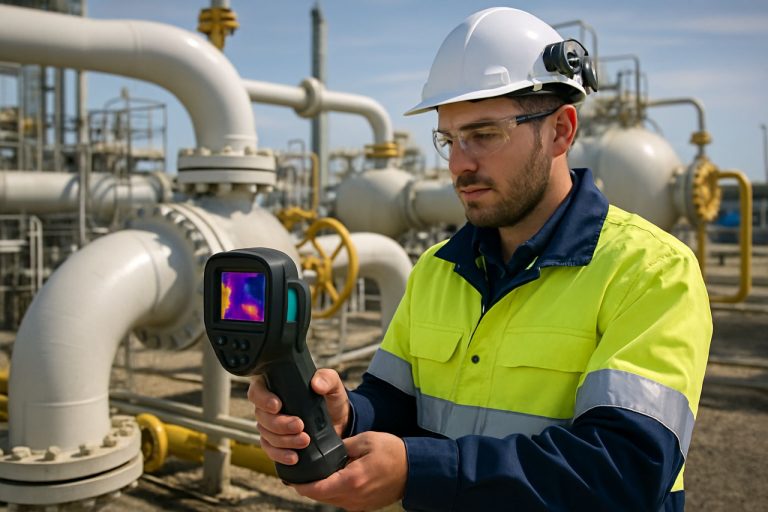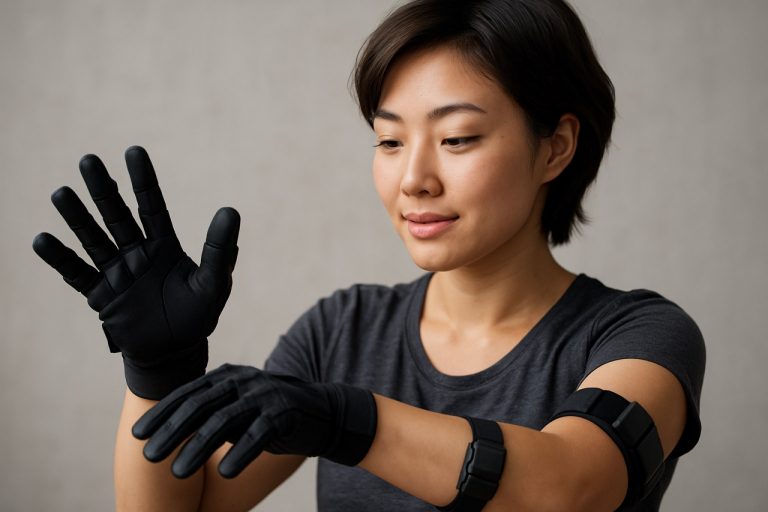
The Future of Wearable Haptics: 2025 and Beyond. How Advanced Touch Technologies Are Shaping Immersive Experiences, Healthcare, and Human-Machine Interaction.
- Executive Summary: Key Trends and Market Drivers
- Market Size and Forecasts Through 2030
- Breakthrough Technologies in Wearable Haptics
- Leading Companies and Industry Initiatives
- Applications: Healthcare, Gaming, AR/VR, and Beyond
- Regulatory Landscape and Industry Standards
- Challenges: Technical, Ethical, and User Adoption
- Investment, M&A, and Startup Ecosystem
- Case Studies: Real-World Deployments and Pilots
- Future Outlook: Emerging Opportunities and Strategic Recommendations
- Sources & References
Executive Summary: Key Trends and Market Drivers
The wearable haptics sector is experiencing rapid evolution in 2025, driven by advances in materials science, miniaturization, and the integration of artificial intelligence. Haptic feedback—technology that simulates touch sensations—has become a critical component in next-generation wearables, enhancing user immersion in virtual and augmented reality (VR/AR), healthcare, and remote collaboration. The convergence of these technologies is propelling both research and commercial development, with significant investments from established technology leaders and innovative startups.
Key trends shaping the market include the proliferation of lightweight, flexible haptic actuators and the adoption of wireless, low-latency communication protocols. Companies such as HaptX are pioneering microfluidic haptic gloves that deliver highly realistic tactile feedback for enterprise VR applications, while Teslasuit continues to refine its full-body haptic suits for training, simulation, and rehabilitation. Meanwhile, Ultraleap is advancing mid-air haptics, enabling touchless interaction for automotive and public interfaces.
Healthcare and rehabilitation remain major drivers, with wearable haptics enabling more effective physical therapy and remote patient monitoring. For example, Tactai and bHaptics are developing solutions that provide nuanced feedback for motor skill training and assistive devices. The gaming and entertainment industries are also accelerating adoption, as haptic vests, gloves, and controllers become increasingly accessible to consumers.
Recent data indicates a surge in R&D activity, with patent filings and academic publications on wearable haptics reaching record highs in 2024 and early 2025. Industry collaborations with research institutions are intensifying, aiming to overcome challenges such as power consumption, device comfort, and the standardization of haptic APIs. The formation of industry alliances and open-source initiatives is expected to further accelerate innovation and interoperability.
Looking ahead, the outlook for wearable haptics is robust. The sector is poised for double-digit annual growth through the late 2020s, fueled by expanding use cases in industrial training, telemedicine, and immersive media. As component costs decline and user expectations for tactile realism rise, wearable haptics are set to become a mainstream interface technology, fundamentally reshaping how humans interact with digital environments.
Market Size and Forecasts Through 2030
The wearable haptics sector is experiencing robust growth, driven by advancements in virtual and augmented reality, gaming, healthcare, and industrial training. As of 2025, the market is characterized by a surge in research and development activities, with a focus on creating more compact, energy-efficient, and realistic haptic feedback devices. Key players are investing in both hardware and software innovations to enhance user immersion and expand application domains.
Leading companies such as HaptX and bHaptics are at the forefront, offering sophisticated haptic gloves and vests that deliver precise tactile sensations for VR and simulation environments. HaptX has notably partnered with industry and government organizations to develop high-fidelity haptic systems for training and remote operation, while bHaptics continues to expand its product line for consumer and enterprise markets. Meanwhile, Tactai and Ultraleap are pioneering mid-air haptics and touchless interfaces, broadening the scope of wearable haptics beyond traditional form factors.
The healthcare sector is a significant driver, with wearable haptics being integrated into rehabilitation devices and surgical training simulators. Companies like HaptX and Ultraleap are collaborating with medical institutions to validate the efficacy of haptic feedback in improving patient outcomes and clinician training. In parallel, the gaming and entertainment industries are accelerating adoption, as immersive haptic suits and accessories become more accessible to consumers.
From a regional perspective, North America and Asia-Pacific are leading in both R&D investment and early commercialization, with Europe following closely due to strong academic-industry partnerships. The proliferation of 5G and edge computing is expected to further catalyze the deployment of cloud-connected haptic devices, enabling real-time, low-latency feedback for remote collaboration and telepresence.
Looking ahead to 2030, the wearable haptics market is projected to maintain double-digit annual growth, underpinned by continuous innovation and expanding use cases. The convergence of haptics with AI, advanced sensors, and wireless technologies is anticipated to yield more intuitive and adaptive devices. As interoperability standards mature and costs decline, wearable haptics are poised to become integral to next-generation human-machine interfaces across industries.
Breakthrough Technologies in Wearable Haptics
The field of wearable haptics is experiencing rapid advancements, driven by interdisciplinary research and the convergence of materials science, robotics, and human-computer interaction. As of 2025, research and development efforts are focused on creating more immersive, lightweight, and energy-efficient haptic devices that can be seamlessly integrated into daily life and professional applications.
A major trend in current research is the miniaturization and flexibility of haptic actuators. Companies such as TDK Corporation are developing piezoelectric and electromagnetic actuators that enable precise tactile feedback in compact form factors, suitable for integration into smartwatches, gloves, and even textiles. These actuators are being engineered to deliver a wider range of sensations, from subtle vibrations to complex force feedback, enhancing realism in virtual and augmented reality environments.
Another significant area of development is the use of soft robotics and advanced materials. Research teams at organizations like Xsens Technologies are exploring soft, stretchable materials that conform to the human body, allowing for comfortable long-term wear and more natural haptic interactions. These materials are being combined with sensor arrays to provide real-time feedback on user movement and environmental interactions, which is particularly valuable in rehabilitation, training, and remote operation scenarios.
Wireless connectivity and low-latency communication protocols are also at the forefront of wearable haptics R&D. Companies such as Ultraleap are pioneering mid-air haptic feedback systems that do not require direct contact with the skin, using ultrasound to create tactile sensations in free space. This technology is being refined for integration with AR/VR headsets and automotive interfaces, aiming to provide intuitive, touchless control experiences.
In the medical and assistive technology sectors, research is focused on enhancing sensory substitution and rehabilitation tools. For example, HaptX is developing haptic gloves that simulate touch and force feedback with high fidelity, supporting applications in physical therapy, remote surgery, and skill training. These devices are being evaluated in clinical trials and pilot programs, with early data indicating improved patient outcomes and training efficiency.
Looking ahead, the next few years are expected to see further integration of artificial intelligence and machine learning into wearable haptics, enabling adaptive feedback tailored to individual users and contexts. As battery technology and wireless standards continue to improve, fully untethered, all-day wearable haptic devices are anticipated to become commercially viable, expanding their impact across consumer, industrial, and healthcare domains.
Leading Companies and Industry Initiatives
The wearable haptics sector is experiencing rapid innovation, with leading companies and industry initiatives shaping the trajectory of research and development through 2025 and beyond. The field is characterized by a blend of established technology giants, specialized startups, and collaborative industry consortia, all working to advance tactile feedback systems for applications in virtual reality (VR), augmented reality (AR), healthcare, and human-computer interaction.
A prominent player, Sony Group Corporation, continues to invest in haptic technologies, leveraging its expertise in consumer electronics and gaming. Sony’s PlayStation VR2, released in 2023, features advanced haptic feedback in both the headset and controllers, setting a benchmark for immersive experiences and driving further R&D into wearable haptics for entertainment and training applications.
Another key innovator, HaptX Inc., specializes in realistic haptic gloves for enterprise and research use. In 2024, HaptX announced new partnerships with automotive and aerospace companies to develop simulation and training solutions, and its microfluidic technology is widely regarded as a leading approach for high-fidelity tactile feedback. The company’s ongoing collaborations with industry and academia are expected to yield further breakthroughs in 2025.
In the realm of exoskeletons and rehabilitation, Hocoma AG is notable for integrating haptic feedback into wearable devices for physical therapy. Their systems, used in clinics worldwide, are being enhanced with more nuanced tactile cues to improve patient outcomes and engagement, reflecting a broader trend toward medical-grade wearable haptics.
Startups such as bHaptics Inc. are also making significant strides. bHaptics offers a suite of consumer-focused haptic wearables—including vests, sleeves, and gloves—compatible with major VR platforms. The company’s modular approach and developer-friendly SDK have fostered a growing ecosystem of haptic-enabled content, with new product iterations expected in 2025.
Industry-wide collaboration is facilitated by organizations like the Immersion Corporation, which licenses haptic technologies and works with device manufacturers to standardize tactile feedback across platforms. Immersion’s efforts in intellectual property and cross-industry partnerships are instrumental in accelerating the adoption of haptics in wearables.
Looking ahead, the convergence of advances in materials science, miniaturization, and wireless connectivity is expected to drive further innovation. As leading companies expand their R&D investments and industry initiatives foster interoperability, wearable haptics are poised to become integral to next-generation user interfaces, healthcare solutions, and immersive digital experiences through 2025 and the following years.
Applications: Healthcare, Gaming, AR/VR, and Beyond
Wearable haptics research and development is accelerating rapidly in 2025, driven by advances in materials science, miniaturization, and the growing demand for immersive digital experiences. The sector is witnessing significant investment and collaboration among technology companies, academic institutions, and healthcare providers, with a focus on applications in healthcare, gaming, augmented reality (AR), virtual reality (VR), and other emerging fields.
In healthcare, wearable haptics are being developed to enhance rehabilitation, remote patient monitoring, and assistive technologies. Devices such as haptic gloves and vests provide tactile feedback to patients undergoing physical therapy, enabling more precise and engaging exercises. Companies like HaptX are pioneering force-feedback gloves that simulate realistic touch sensations, which are being trialed for use in medical training and telemedicine. Similarly, Tactai is working on fingertip haptic devices that can deliver nuanced tactile cues, supporting both clinical and consumer health applications.
The gaming industry remains a major driver of wearable haptics innovation. In 2025, leading gaming hardware manufacturers are integrating advanced haptic feedback into controllers, suits, and accessories to deliver more immersive gameplay. bHaptics has expanded its portfolio of haptic vests, sleeves, and gloves, which are compatible with popular VR platforms and offer multi-point feedback for a heightened sense of presence. Plexus is collaborating with game developers to create custom haptic solutions that synchronize with in-game events, further blurring the line between virtual and physical experiences.
In AR and VR, wearable haptics are essential for bridging the gap between digital and real-world interactions. Companies such as Ultraleap are advancing mid-air haptic technologies that allow users to feel virtual objects without physical contact, opening new possibilities for training, design, and entertainment. SenseGlove is focusing on exoskeleton gloves that provide force and vibrotactile feedback, enabling users to manipulate virtual objects with unprecedented realism.
Looking ahead, the outlook for wearable haptics is robust. Industry collaborations, open-source development platforms, and standardization efforts are expected to accelerate innovation and adoption across sectors. As hardware becomes more affordable and software ecosystems mature, wearable haptics are poised to become integral to digital healthcare, next-generation gaming, and immersive AR/VR experiences, with further applications anticipated in education, remote work, and human-computer interaction.
Regulatory Landscape and Industry Standards
The regulatory landscape and industry standards for wearable haptics are rapidly evolving as the sector matures and applications expand across healthcare, consumer electronics, automotive, and industrial domains. In 2025, regulatory bodies and standardization organizations are increasingly focused on ensuring safety, interoperability, and user privacy, while supporting innovation in haptic feedback technologies.
A key driver in this space is the International Electrotechnical Commission (International Electrotechnical Commission), which continues to develop and update standards relevant to tactile and haptic interfaces, such as IEC 62899 for electronic displays and IEC 62366 for usability engineering of medical devices. These standards are critical for manufacturers seeking to deploy wearable haptic devices in regulated environments, particularly in medical and assistive applications.
In the United States, the Food and Drug Administration (U.S. Food and Drug Administration) plays a central role in regulating wearable haptic devices intended for medical use, including rehabilitation and sensory substitution. The FDA’s Digital Health Center of Excellence is actively engaging with industry stakeholders to clarify pathways for premarket submissions and post-market surveillance of novel haptic wearables, emphasizing cybersecurity, biocompatibility, and human factors engineering.
On the industry side, the Institute of Electrical and Electronics Engineers (IEEE) is advancing standards such as IEEE 4001, which addresses interoperability and communication protocols for wearable devices, including haptic feedback systems. These efforts are crucial for ensuring that devices from different manufacturers can operate seamlessly within broader ecosystems, such as virtual and augmented reality platforms.
Major industry players, including Sony Group Corporation and Meta Platforms, Inc., are actively participating in standards development and regulatory discussions. Sony, with its haptic-enabled PlayStation peripherals, and Meta, through its Reality Labs division, are both contributing technical expertise and use-case data to inform best practices and compliance frameworks.
Looking ahead, the next few years are expected to see increased harmonization of international standards, particularly as cross-border applications of wearable haptics—such as telemedicine and global gaming platforms—become more prevalent. Regulatory agencies are anticipated to issue more detailed guidance on data privacy, especially concerning biometric and physiological data collected by advanced haptic wearables. Industry consortia and alliances are also likely to emerge, fostering pre-competitive collaboration on safety benchmarks and user experience metrics.
Overall, the regulatory and standards environment for wearable haptics in 2025 is characterized by proactive engagement between regulators, standards bodies, and industry leaders, aiming to balance innovation with user safety and interoperability as the technology moves toward mainstream adoption.
Challenges: Technical, Ethical, and User Adoption
The rapid evolution of wearable haptics is accompanied by a complex set of challenges spanning technical, ethical, and user adoption domains. As the sector moves through 2025, these hurdles are shaping the pace and direction of research and development.
Technical Challenges remain at the forefront. Achieving high-fidelity, low-latency haptic feedback in compact, lightweight devices is a persistent obstacle. Leading companies such as HaptX and bHaptics are pushing the boundaries with advanced microfluidic and vibrotactile technologies, but balancing power consumption, battery life, and device comfort is an ongoing struggle. Integration with other wearable systems—such as AR/VR headsets from Meta Platforms and Sony Group Corporation—demands robust wireless protocols and seamless interoperability, which are not yet standardized across the industry. Furthermore, the miniaturization of actuators and sensors without sacrificing performance or durability is a significant engineering challenge, as highlighted by ongoing R&D efforts at TDK Corporation and Ultraleap.
Ethical Considerations are gaining prominence as wearable haptics become more immersive and data-driven. Devices capable of collecting sensitive biometric and behavioral data raise privacy concerns, especially as haptics are integrated into healthcare and workplace applications. Ensuring data security and user consent is critical, with industry leaders like Apple Inc. and Samsung Electronics emphasizing privacy-by-design principles in their wearable platforms. Additionally, the potential for haptic feedback to manipulate user emotions or behaviors—intentionally or inadvertently—necessitates transparent design and regulatory oversight, a topic under discussion by organizations such as the IEEE.
User Adoption is influenced by both perceived value and usability. While early adopters in gaming, training, and rehabilitation are enthusiastic, mainstream users remain cautious. Comfort, ease of use, and affordability are key factors. Companies like bHaptics and HaptX are working to reduce device bulk and improve ergonomics, but widespread adoption will depend on further miniaturization and cost reduction. Moreover, the lack of compelling content and standardized APIs limits the ecosystem, a gap that industry consortia and platform providers are striving to address.
Looking ahead, overcoming these challenges will require coordinated efforts across hardware innovation, ethical frameworks, and user-centered design. The next few years are likely to see increased collaboration between device manufacturers, standards bodies, and application developers to unlock the full potential of wearable haptics.
Investment, M&A, and Startup Ecosystem
The wearable haptics sector is experiencing robust investment activity and a dynamic startup ecosystem as of 2025, driven by the convergence of virtual reality (VR), augmented reality (AR), and next-generation human-computer interaction. Venture capital and corporate investment are flowing into both established players and emerging startups, with a focus on advancing tactile feedback technologies for applications in gaming, healthcare, training, and remote collaboration.
Key industry leaders such as HaptX and bHaptics continue to attract funding rounds to scale production and expand their product portfolios. HaptX, known for its microfluidic haptic gloves, has secured multi-million dollar investments from both strategic partners and venture funds to accelerate commercialization and R&D. bHaptics, with its modular haptic vests and accessories, has expanded its global reach through partnerships and distribution deals, reflecting growing investor confidence in the sector.
The startup landscape is vibrant, with new entrants focusing on miniaturization, wireless integration, and multi-modal feedback. Companies like Plexus Controls and Tactai are developing novel wearable haptic devices targeting industrial training and medical simulation, respectively. These startups are often supported by accelerator programs and university spinouts, leveraging advances in materials science and sensor technology.
Mergers and acquisitions (M&A) are also shaping the competitive landscape. Larger technology firms are acquiring innovative startups to integrate haptic capabilities into their broader XR and wearable platforms. For example, Meta Platforms, Inc. has demonstrated ongoing interest in haptics through both internal R&D and strategic acquisitions, aiming to enhance immersion in its VR ecosystem. Similarly, Sony Group Corporation continues to invest in haptic feedback for its PlayStation VR and related products, occasionally acquiring or partnering with specialized haptics firms.
Looking ahead, the outlook for investment and startup activity in wearable haptics remains strong. The sector is expected to benefit from increasing demand for realistic digital touch experiences, especially as enterprise and consumer adoption of XR accelerates. Industry analysts anticipate further consolidation as major players seek to secure intellectual property and talent, while new startups will likely emerge around breakthroughs in soft robotics, AI-driven feedback, and energy-efficient actuation. The next few years are poised to see both incremental improvements and disruptive innovations, underpinned by sustained financial and strategic interest from across the technology landscape.
Case Studies: Real-World Deployments and Pilots
The landscape of wearable haptics is rapidly evolving, with 2025 marking a pivotal year for real-world deployments and pilot programs. Several leading companies and research institutions are transitioning from laboratory prototypes to field-tested solutions, targeting sectors such as healthcare, training, entertainment, and industrial safety.
One of the most prominent case studies is the deployment of the HaptX Gloves in industrial training environments. HaptX has partnered with major aerospace and automotive manufacturers to pilot its microfluidic haptic gloves, which provide realistic touch feedback for virtual reality (VR) training. These pilots, ongoing since late 2023 and expanding through 2025, have demonstrated improved trainee engagement and skill retention, with companies reporting reductions in training time and error rates. HaptX’s collaborations with organizations such as NASA further underscore the technology’s potential for remote operation and telepresence in hazardous or inaccessible environments.
In the healthcare sector, Columbia University’s Biomedical Engineering Department has advanced clinical trials of wearable haptic sleeves for stroke rehabilitation. These devices, developed in partnership with medical device manufacturers, deliver precise tactile cues to guide patient movements during therapy. Early results from 2024-2025 pilots indicate increased patient adherence and measurable improvements in motor function recovery, supporting the integration of haptics into mainstream rehabilitation protocols.
Entertainment and consumer electronics are also seeing significant pilots. Sony Group Corporation has expanded the use of haptic feedback in its PlayStation VR ecosystem, with the PlayStation VR2 headset and controllers featuring advanced tactile sensations. In 2025, Sony is collaborating with game developers to pilot new forms of immersive gameplay, leveraging haptic wearables to simulate environmental effects and object interactions. These pilots are closely watched as indicators of broader consumer adoption.
In the realm of accessibility, Teslasuit has launched pilot programs with educational institutions to test full-body haptic suits for immersive learning and assistive applications. The suits provide multisensory feedback, enabling users with visual or auditory impairments to experience spatial and contextual cues in virtual environments. Early feedback from these pilots, running through 2025, highlights increased engagement and accessibility for diverse learners.
Looking ahead, the next few years are expected to see a surge in cross-sector pilots, with companies like Columbia University, HaptX, and Teslasuit at the forefront. The outcomes of these real-world deployments will shape standards, inform regulatory frameworks, and accelerate the integration of wearable haptics into everyday applications.
Future Outlook: Emerging Opportunities and Strategic Recommendations
The future of wearable haptics research and development in 2025 is marked by rapid technological advances, expanding application domains, and strategic industry collaborations. As the demand for immersive digital experiences grows, haptic technologies are increasingly integrated into consumer electronics, healthcare, automotive, and industrial training sectors. The convergence of miniaturized actuators, advanced materials, and AI-driven feedback systems is enabling more precise, energy-efficient, and user-friendly wearable haptic devices.
Key industry players are accelerating innovation through both proprietary R&D and open collaboration. HaptX continues to refine its microfluidic haptic gloves, targeting enterprise VR training and simulation markets. Their recent partnerships with leading automotive and aerospace firms underscore the strategic value of realistic touch feedback in high-stakes environments. Meanwhile, Immersion Corporation is expanding its licensing portfolio, focusing on integrating haptic feedback into next-generation wearables and mobile devices, and collaborating with global OEMs to standardize tactile experiences.
In the consumer space, Meta Platforms, Inc. is investing heavily in wearable haptics for its AR/VR ecosystem, with ongoing research into lightweight, low-latency gloves and wristbands. Their work aims to bridge the gap between virtual and physical interactions, enhancing realism in social, gaming, and productivity applications. Similarly, Sony Group Corporation is leveraging its expertise in gaming peripherals to develop advanced haptic wearables, building on the success of its DualSense controller technology.
Healthcare is another promising frontier. Companies like Tactai are developing wearable haptic interfaces for remote rehabilitation and telemedicine, enabling more effective patient engagement and therapy adherence. These solutions are expected to gain traction as telehealth adoption continues to rise globally.
Looking ahead, the next few years will likely see increased standardization efforts, interoperability initiatives, and cross-industry partnerships. Strategic recommendations for stakeholders include investing in scalable manufacturing processes, prioritizing user comfort and accessibility, and fostering open innovation ecosystems. As regulatory frameworks evolve, early engagement with standards bodies and healthcare authorities will be critical for market entry and adoption.
- Expand R&D into soft, flexible materials for improved wearability.
- Collaborate with AI and sensor technology providers to enhance feedback precision.
- Engage with industry consortia to shape interoperability standards.
- Prioritize privacy and data security in connected haptic devices.
Overall, wearable haptics is poised for significant growth, with 2025 marking a pivotal year for commercialization and mainstream adoption across multiple sectors.
Sources & References
- HaptX
- Teslasuit
- Ultraleap
- bHaptics
- Xsens Technologies
- Hocoma AG
- Immersion Corporation
- Plexus
- SenseGlove
- IEEE
- Meta Platforms, Inc.
- Apple Inc.
- HaptX
- NASA
- Teslasuit



